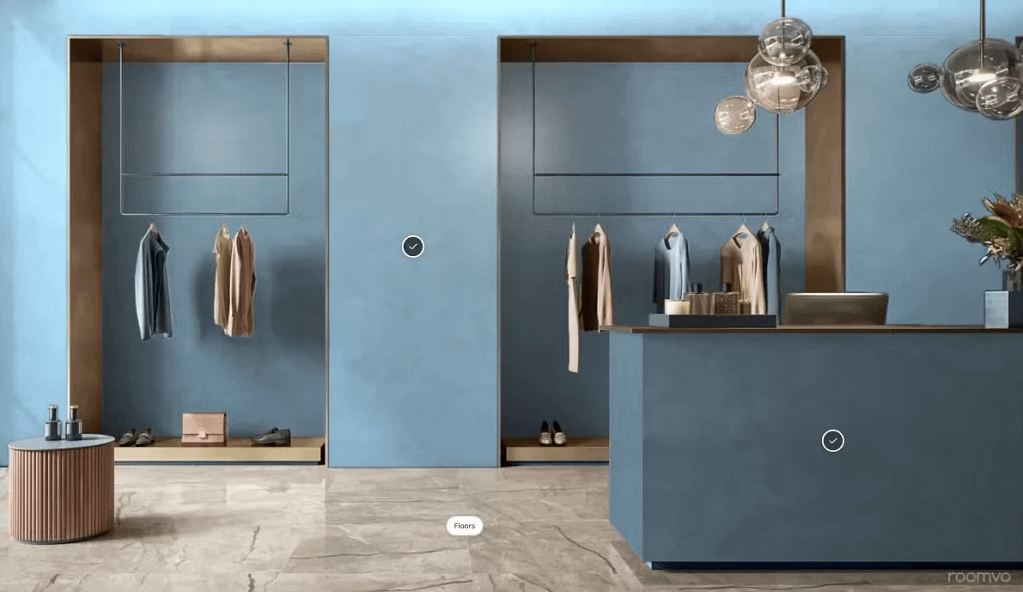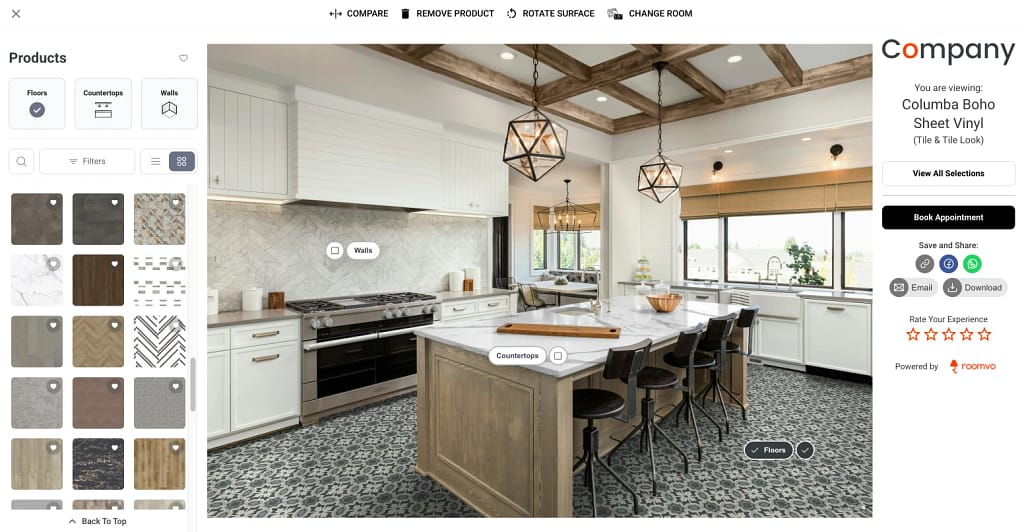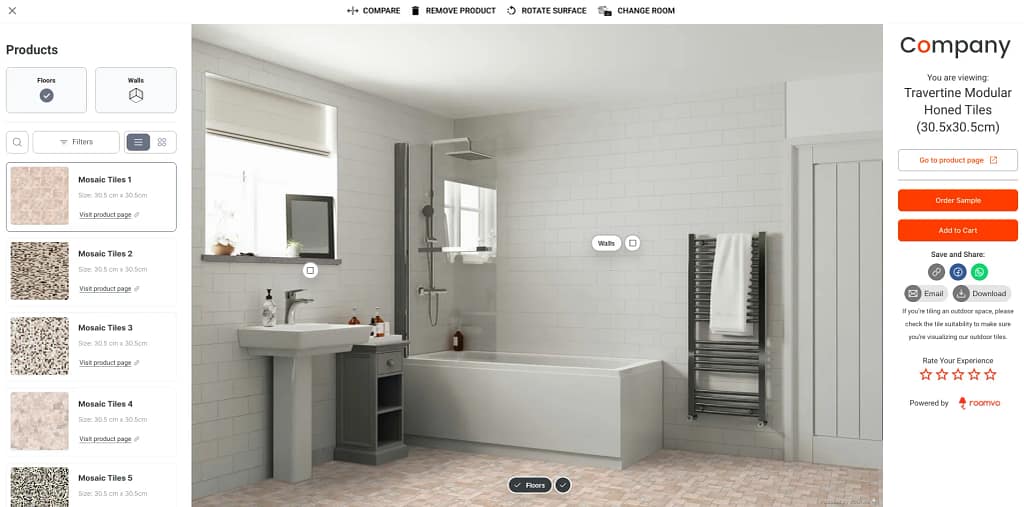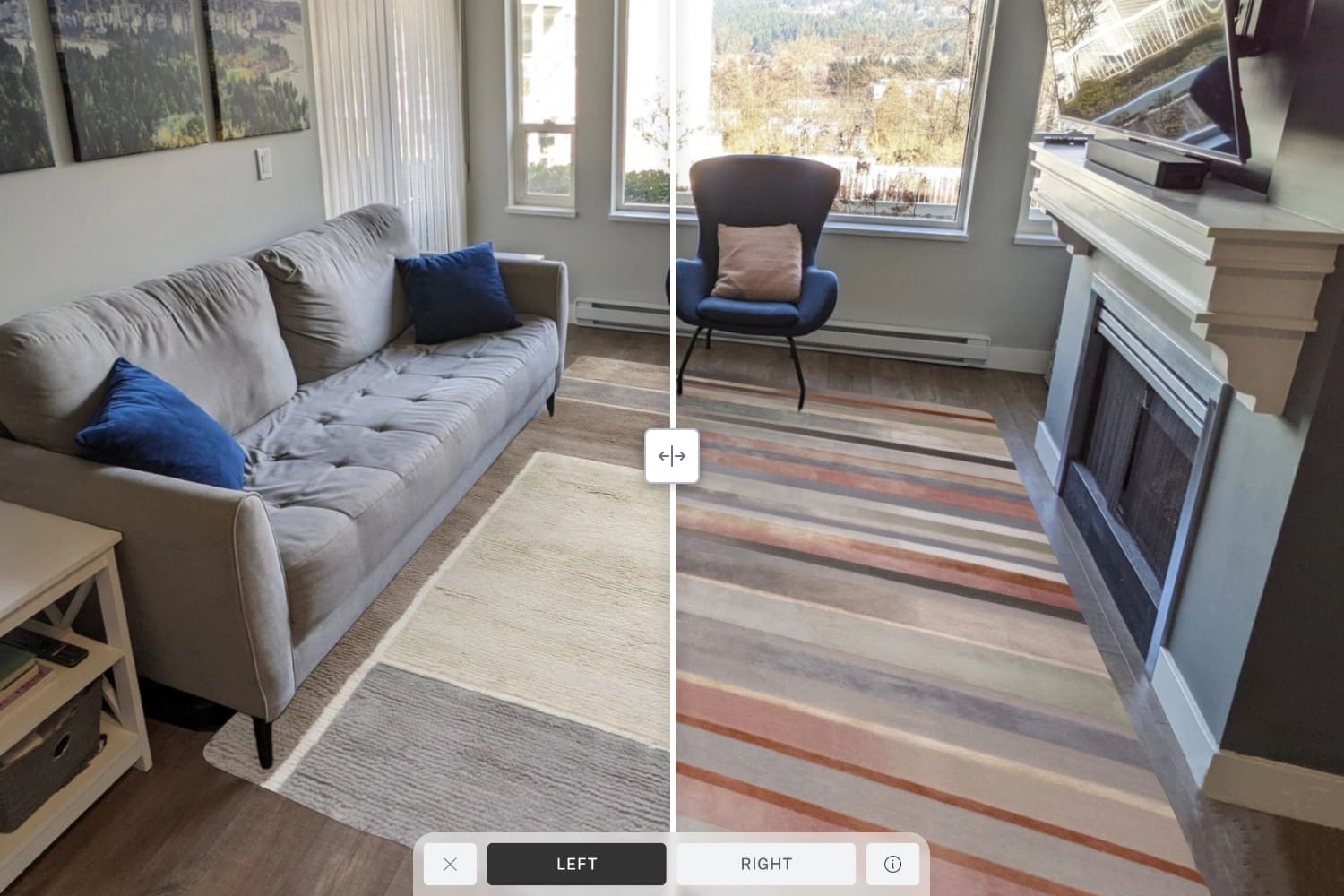Home decor and improvement businesses are increasingly tapping into the potential of room visualization to help customers find the perfect products for their homes.
But how about finding the perfect room visualizer for your business?
When done right, room visualization can enhance customer satisfaction, boost product engagement, and, ultimately, accelerate sales. But not every room visualizer is created equal — far from it.
Each platform boasts distinct features and capabilities, ranging from the type of products they visualize, to the speed and quality of their renderings, and their ability to integrate onto customer websites. Similarly, each business will have different objectives and pain points that they hope a room visualizer can address.
How well does your room visualization partner meet your specific goals and needs as a business? Here are five essential criteria to guide your evaluation and help you navigate this question.
1. The visualization experience
The main function of a room visualizer is to show customers what your products will look like in their homes — as if they were viewing them in real life. So, to ensure the most realistic results, your visualizer should deliver high-quality renderings that not only showcase the intricate details of your products but also expertly detect the original photo’s surfaces, objects, lighting, and shadows.
Imagine a customer exploring your wallpaper collection for their bedroom renovation. Is the wallpaper accurately applied to the intended surfaces, with smooth edges around the furniture in the room? Do shadows authentically appear on the wall?
If the rendering lacks realism, it reduces customer confidence in your brand and, in turn, the overall appeal of your products. This defeats the very purpose of room visualization.
The functionality of your room visualizer is equally as important. If it requires too many steps to start visualizing products, takes too long to produce a rendering, or isn’t compatible with different devices and browsers, it may cause frustration and drive potential customers away.
Therefore, any evaluation of your partner should start with the visualization experience.
Questions to ask yourself:
- How realistic is your visualization experience?
- Is your room visualizer easy to use? How quickly does it produce a rendering?
- How well does your room visualizer handle lighting and shadows?
- Does your room visualizer detect objects easily?
- Can your room visualizer detect the correct perspective/orientation of walls?

2. Innovation
Technology moves fast.
Consider the leaps in cellphone camera quality over the last five years, and the ever-advancing realms of augmented reality (AR) and artificial intelligence (AI). If your room visualization partner isn’t keeping up with such technological advancements, your tool can very easily become obsolete.
Some room visualizers can only display a single product like flooring, for example. Other visualizers, like Roomvo, can display flooring, countertops, and wallcoverings within the same user experience. This makes it easier for businesses to bundle products, and for customers to see their entire renovation project come to life.
Additionally, Roomvo leverages AI to improve their visualization experience, such as identifying the type of room a customer has uploaded. By doing so, the visualizer can then suggest relevant products tailored to that specific environment. For instance, when a customer uploads a photo of their bathroom or kitchen, the visualizer may present your tile collection.
Having an innovative room visualization partner will prevent your tool from becoming outdated and help elevate the overall visualization experience.
Questions to ask yourself:
- How often does your visualization partner update their product?
- Does your partner add new features that you and your customers find useful?
- Can you visualize multiple products at the same time?
- Does your partner leverage AI?

3. Customer support
If you’ve outsourced your room visualization needs, you shouldn’t just be getting access to a tool. Rather, you should get access to the expertise and support required to make the most of it.
From onboarding, to ingesting product data, to troubleshooting any glitches that may arise, your partner should be doing the heavy lifting to ensure your visualizer is working as it should. And you should be able to rely on them for prompt assistance whenever you’re facing any issues.
But that’s just the starting point.
A committed partner goes beyond the transactional relationship by offering regular guidance to optimize your visualizer, making your success their top priority.
Questions to ask yourself:
- Does your partner offer complimentary training to help you get the most from your visualizer?
- How often does your visualization partner check in with you?
- Do you feel your partner listens to your needs and actively works to address them?
- How quickly does your partner respond to queries?
- Do you have access to dedicated customer support and/or success teams?
4. Data analytics
The ultimate goal of a room visualizer is to instill consumer confidence and turn more browsers into buyers. But with the right visualization partner, it can also provide a gateway to valuable consumer insights that help shape your business decisions.
At the very least, you should get access to an analytics portal that shows which of your products are being visualized the most. Ideally, you’ll also be able to sort the data by material, finish, colour, size, shape and more to get an understanding of the evolving trends within your target markets. By identifying such trends before they emerge, you can proactively adjust your inventory to meet upcoming demands.
You can get all these insights and more on the Roomvo PRO data analytics portal, such as which types of room customers are viewing your products in most, product engagement, and leads and conversions.
These insights can help inform your marketing and merchandising strategies. For instance, if you find that a particular product is gaining traction in the visualizer, you’ll likely benefit from featuring it prominently in your digital advertising and in-store displays.
Customers who upload a photo of their room to your visualizer are likely to engage with far more of your products than they would otherwise, opening up a new wealth of data that reflects user behaviour. And thus, accessing such data becomes a key factor in evaluating your visualization partner.
Questions to ask yourself:
- How much data do you have access to?
- Can you access the data yourself?
- Can you see which of your products are being visualized the most?
- Does your visualization partner help you analyze the data?
- Does the data available give you insights into your customer behaviours and help you make business decisions?
5. Website integration
Knowing that room visualization is meant to simplify the shopping experience and drive conversions,
the effectiveness of your visualizer hinges — at least in part — on seamless integration with your website.
For starters, the visualizer should always live on your own website — not someone else’s. And it should be fully customizable to your brand’s colours, fonts, and logos, making it appear as an extension of your website rather than a separate experience.
Accessibility is also key. Customers should be able to easily access your visualizer from both your product listing pages (PLPs) and product detail pages (PDPs), where they’re most likely to make their purchasing decisions. And once they open the visualizer and see a product come to life, they should have the option to add the item to their cart, order a sample, and/or find a retailer right then and there. Alternatively, it should be easy for customers to return to the PDP to gather additional information if needed.
Choosing a visualizer that seamlessly transitions from product discovery, to visualization, to checkout will help foster a frictionless shopping experience that increases the potential for conversion.
Questions to ask yourself:
- Does your visualizer redirect users away from your website?
- Can your visualizer be customized with your brand’s colours, fonts, and logos?
- How easy is it to access your visualizer from your PDPs and PLPs?
- Does the visualizer button on your PDPs open up that specific product in the visualizer window? Or does a user have to search for that product again to see it in their space?
- Does your visualizer offer multiple CTA options (add to cart, order sample, find a retailer, etc)?

Choosing the right room visualization partner for your business
By now, it’s clear that room visualization has changed the game for home decor and improvement businesses. But is your room visualization partner helping you make the most of this transformative technology? With the most realistic visualization in the industry, constant innovation, reliable support, comprehensive data analysis, and fully optimized integration, Roomvo helps you meet your specific goals as a business. Click here to book a demo.
Written by:
-

Farhan Devji is a published author and content writer who’s written for some of Canada’s biggest newspapers and worked in communications/marketing for close to a decade. His new book, Alphonso Davies: A New Hope, was published in May 2023 with ECW Press.






